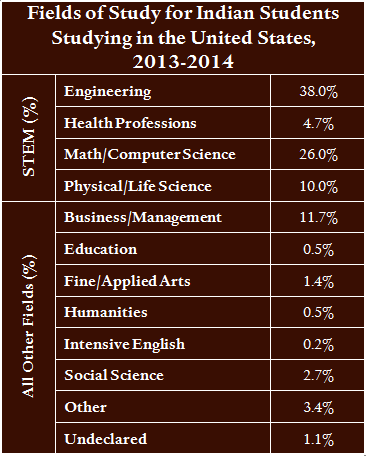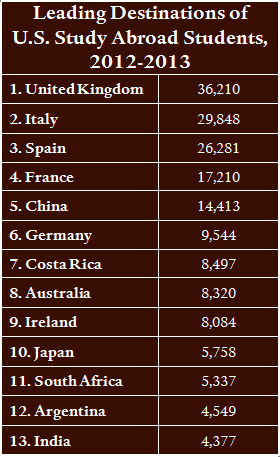India and U.S. Higher Education: Strong Indian Presence in the United States, but Americans Studying in India Still Meager

More on:
This week the Institute for International Education (IIE) released the latest survey data on foreign students, study abroad, and U.S. higher education. The survey, Open Doors, comes out annually and draws on data collected from around three thousand U.S. colleges and universities. Indian students are a strong presence on U.S. campuses, contributing an estimated $3.3 billion to the U.S. economy as IIE reports, using U.S. Department of Commerce data. This year, the number of Indian students in the United States surpassed the 100,000 mark, ticking up to 102,673, keeping India the number two country of origin for foreign students in the United States.
As the Open Doors fact sheet on India shows, India was the number one place of origin for foreign students in the United States for eight years, from the 2001-02 survey year through 2008-09. In 2009-10, however, China surpassed India as a place of origin, with more than 127,000 students in the United States that year compared with India’s nearly 105,000. The number of students from India then began to dip slightly, dropping to below 100,000 by 2012-13, although it was still the number two place of origin. By comparison, students from China have been rapidly increasing in numbers such that for the 2013-14 year just released, there were close to 275,000 Chinese students in the United States.

An overwhelming number of Indian students in the United States are at the graduate level, 59.5 percent. Just 12.3 percent of the Indian students here are undergrads, and 27 percent are pursuing optional practical training (a year of work preceding or following degree completion). This profile differs substantially from the breakdown of Chinese students in the United States, of whom 40 percent are undergrads, 42 percent are graduate level, and 12.2 percent are carrying out optional practical training. More interestingly, 78.6 percent of the Indian students in the United States are in the “STEM” (Science, Technology, Engineering, Math) fields. The only country sending a higher proportion of its students in the STEM fields is Iran, with 79.6 percent. I was surprised that the number of Indian students in business is just 11.7 percent. Every other field of study tracked by Open Doors clocks in at 3 percent or less for Indian students: the social sciences, just 2.7 percent; fine arts, 1.4 percent; humanities, a mere 0.5 percent, as was education. This means the average Indian student in the United States is highly likely to be in a STEM graduate degree program.

Open Doors also releases data on the top destinations for U.S. students studying abroad. I’ve had a personal interest in India’s rank on this list for some years now—my own participation in a semester abroad program in India back in 1990 changed my life. The list of the leading destinations for study abroad programs (2012-13) contains few surprises. The United Kingdom is hands-down the most sought-after destination, comprising 12.5 percent of the total, or more than 36,000 students. Italy comes in a close second, then Spain, France, and China as number five. As a graphic on the Open Doors website shows, the UK, Italy, and Spain together host 32 percent of all Americans studying abroad.

India comes in at number thirteen. The number of Americans heading to India has certainly increased; back in 1996-97, for example, just 601 American students went to India. According to the Open Doors data, the number of U.S. study abroad students in India was 4,377 for 2012-13. India as a study destination has been on a slow upward trend, with a big 44 percent jump in 2009-10 from 2,690 to 3,884 students. In subsequent years the growth has been much smaller, and last year the numbers actually dipped a bit.
I had the opportunity to speak with the president of IIE, Dr. Allan E. Goodman, about India and study abroad. He noted that it indeed is suprising that more Americans don’t study in India, particularly since the prevalence of English as the language of higher education in India would seem to help, and Americans studying international relations should be “equally as interested in India as they are in China.” Dr. Goodman said IIE has been trying to get U.S. students to go to India but has not made progress, perhaps because India is not as well set-up to receive international visitors, but is also more ambivalent about whether foreign providers should have a role in higher education in India.
It’s positive to see the upward trend of Americans studying in India, but these numbers are still meager compared with the number of Americans heading to China—more than 14,000 last year—let alone Europe. Even Costa Rica ranks higher, with nearly 8,500 American students. Still some work to do.
Top photo credit: Second EducationUSA Fair, Kolkata 2014. Photo by Biswarup Ganguly licensed under CC BY 3.0.
Follow me on Twitter: @AyresAlyssa
More on:
 Online Store
Online Store
